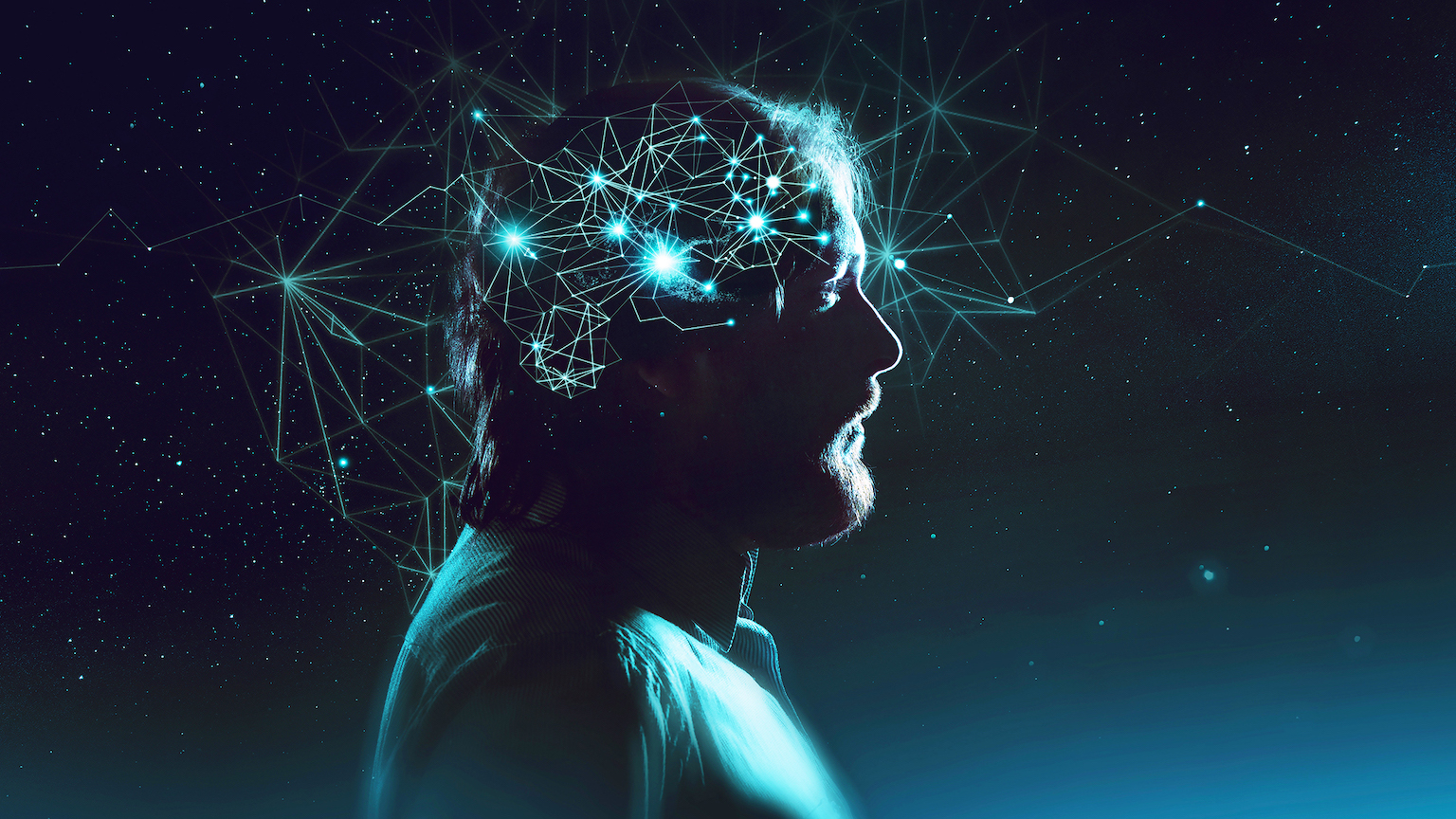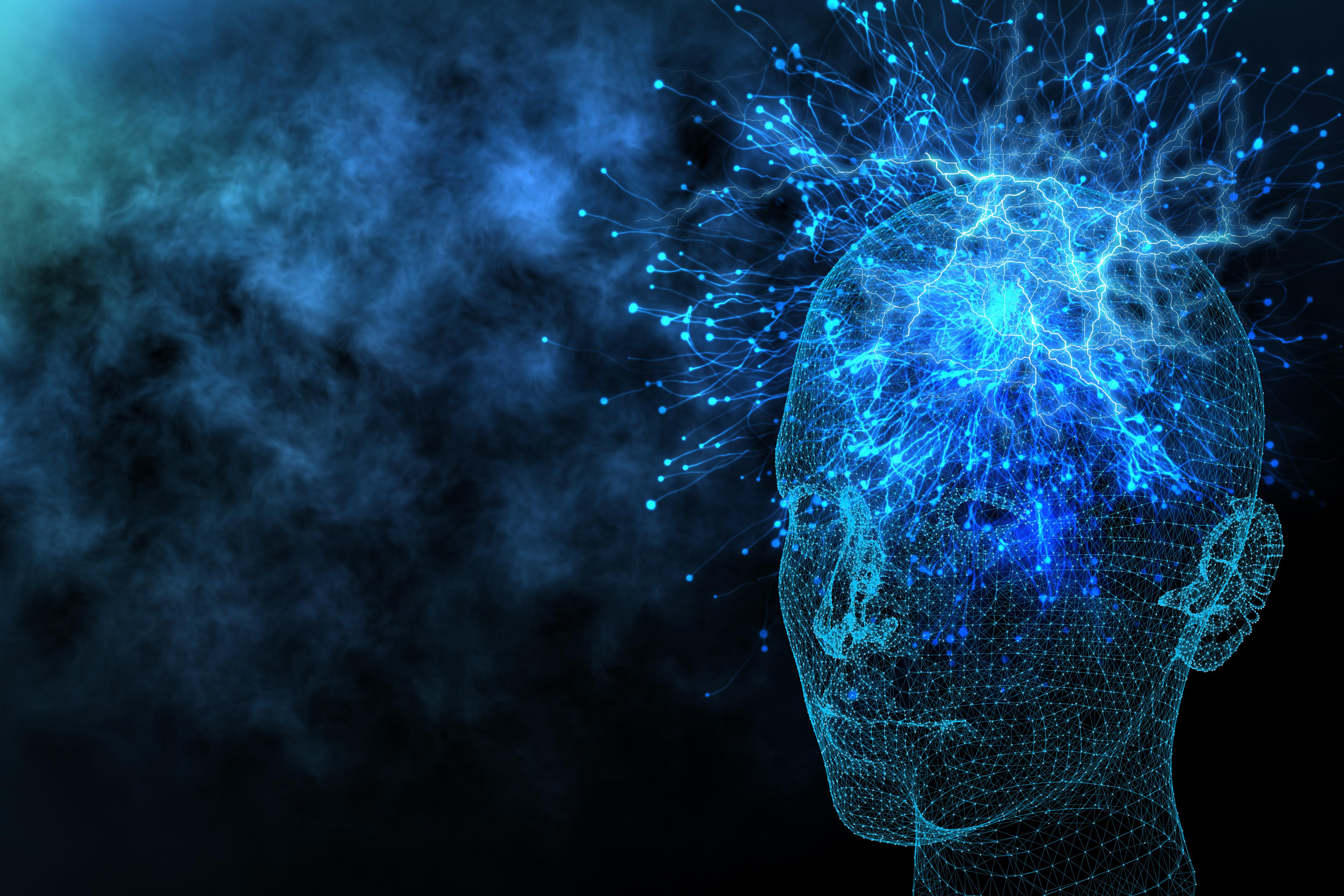Can quantum mechanics explain consciousness?

- Despite the tremendous success of quantum physics, its interpretation remains uncertain.
- The brain, which is made up of neurons, which themselves are made up of molecules, is likely influenced by quantum effects.
- Can quantum mechanics and neuroscience be merged into a theory of “quantum consciousness”?
Few mysteries are more persistent and inscrutable than the mystery of who we are. Granted, there are many ways to go about exploring this question, and science is not the only one. Artists and philosophers most deservedly hold a claim to elucidating some aspects of our identity and subjective life. In a sense, science is the new kid on the block, given that we can date the first “almost” scientific musings about mind and matter to the early 17th century with Descartes.
Well beyond Descartes and his mind-body duality, new questions have emerged that are as exciting as they are nebulous: Does quantum physics play a role in how the brain works? Or, more profoundly, is the mind, viewed as a collection of possible brain states, sustained by quantum effects? Or can it all be treated using classical physics?
There is nothing better than mixing two great mysteries to produce an even bigger one.
The truth is that despite the tremendous success of quantum physics when it comes to its applications — the digital and nuclear technologies that define much of modern life — its interpretation remains uncertain, a target of heated debate among physicists. We know how to use quantum physics, but we do not know what it is telling us about the nature of reality.
The brain is a black box
As for how the brain sustains our mind and consciousness, we still know precious little, even if advances in imaging techniques in the past two decades or so have revealed, to a certain extent, how clusters of neurons, often in different regions in the brain, ignite under different stimuli like lights on a Christmas tree. In a nutshell, the issue here is that tagging neuronal activity is the easy part of the task. The hard part is understanding how active neurons conspire to create the sense of who we are — that is, translating bioelectrical activity and blood flow into self-awareness.
In the 17th century, Descartes proposed to split mind and matter: while matter has spatial extension (in fact, filling space completely, according to Descartes), mind does not. Mind is not matter but, in ways that stumped even Descartes, can influence matter. How does something that is immaterial influence something that is material? Descartes also postulated that mind precedes matter, the essence of his famous, “I think therefore I am.” This mind-body dualism caused and causes much confusion, especially for those who use it to defend the existence of some kind of soul or spirit that is independent of matter and that can survive its inexorable decay. How does the “I” that is you persist without the grounding structures of the material brain?
Largely, scientists and philosophers defend that only matter exists. The fact that the workings of the brain remain mysterious is not due to some immaterial entity but to our own difficulty of understanding its complexity. There are those who propose that to understand the brain, we must start bottom-up: from individual neurons to synaptic links and the neurotransmitters that flow between them to clusters of neurons and brain circuits. There are those, especially the philosophers Thomas Nagel, Colin McGinn, and David Chalmers, sometimes known as the “Mysterians,” who defend that we are cognitively incapable of (or, as McGinn puts it, “cognitively closed” to) understanding consciousness — that is, the subjective experience we have when we are feeling something, be it the tone of a color or falling in love.
Can quantum mechanics explain consciousness?
The bizarre behavior of quantum systems inspires speculation on how they may play a role in the workings of the brain. After all, if we take a bottom-up approach, the brain is made of neurons; and neurons, like any other cell, need proteins and a host of biomolecules to function. Since quantum effects take place at the molecular level, it is possible that they may do something important for consciousness.
The first quantum effect that may be relevant is superposition, the fact that from subatomic to molecular scales, systems can exist in many quantum states at once. For example, before an electron is detected, it can be in many places at once — or at least that is how we interpret the data. The mathematical machinery of quantum mechanics allows us to compute the probability that the electron will be found here or there once measured. Before there is a measurement, however, we cannot tell for sure where the electron is. The data, then, are the measurements of the electron’s position within the accuracy of the measuring device.
Could thoughts exist in some sort of quantum superposition in an unconscious level only to become conscious when there is a specific selection — akin to a measurement of the electron’s position? This is what Nobel Prize laureate physicist Roger Penrose and anesthesiologist Stuart Hameroff have proposed. (Below is a very instructive video of their view.)
The active entity that promotes the selection is a protein called tubulin, which forms the microtubules that provide the neuron’s skeletal support. The microtubules could be a sort of quantum highway network supporting the superposition and entangled states of tubulin inside neurons. They supposedly act as a quantum computer to optimize neuronal and inter-neuronal performance. Other ideas come from Giulio Tononi and Christoph Koch’s Integrated Information Theory, which they claim applies to quantum vibrations in microtubules.
The second quantum effect that might be relevant is entanglement, the ability of two or more quantum systems to establish links between themselves that are sustained across long spatial distances. We say that entangled states behave as a single entity, losing their individual identities. The idea here is to use the spatial aspect of entangled states to “spread out” quantum effects with a given signature across long distances within the neuronal networks.
Cold water for quantum consciousness
There has been strong criticism of Penrose and Hameroff’s ideas from experimental and theoretical angles. Theoretical arguments, for example presented by MIT physicist Max Tegmark, suggest that the brain is too busy and warm an environment to sustain coherent quantum states. Indeed, coherent quantum states are very fragile: influences from the surrounding environment (like colliding molecules or heat vibrations) can easily destroy the superposition of states, selecting only one of them. In effect, the warm brain environment can turn quantum mechanics into classical physics. In this case, quantum effects would be negligible.
There is no question that quantum effects add a degree of bafflement to our understanding of the world. It is also true that, at least at the synaptic level where a host of neurotransmitters flow through narrow acceptance gates, quantum effects may indeed play a role. Currently, the majority opinion points toward a classical explanation for the workings of the brain through the myriad couplings of neuronal clusters and their incessant firings.
Given the complex nature of inter-neuronal connectivity, there is certainly room for exploration and speculation. As is often the case, the solution may be not “either-or” but “both.” There may be cooperation between quantum and classical effects that jointly determine the functioning of the brain at different levels.
Whatever the resolution may be, we still do not know how to avoid the arguments from the Mysterians. The nature of consciousness could be one of those “unknowables” that many people will find very hard to live with. I, for one, embrace it. This unknowability may well be what will rescue what is left of our humanity from the unstoppable mechanization and objectification of modern existence.





